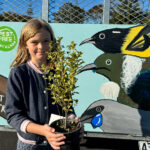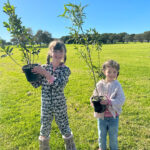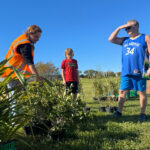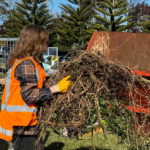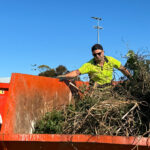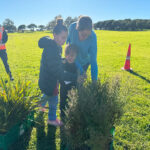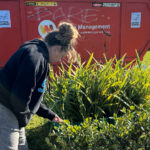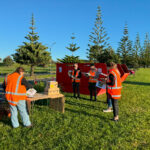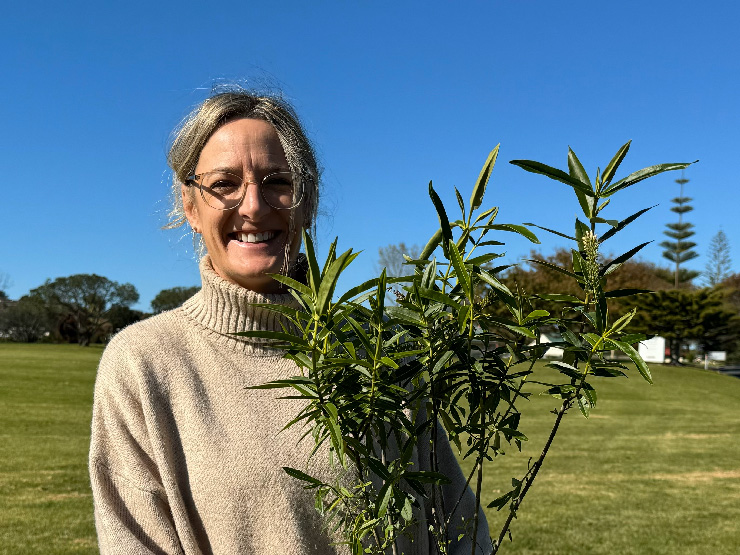
We wrapped up this year’s Moth Plant Competition in the best possible way – with sunshine, smiles, and a fantastic Weed Swap event that brought the community together to celebrate and continue our collective mahi.
The weather turned it on for us, we were lucky to have a clear, sunny day, perfect for people to get outdoors and bring along the results of their hard work (especially after a lot of rain!). From every corner of the Howick Ward, locals turned up with bags, bins, and trailer-loads of invasive weeds from their gardens and backyards.
In return, we offered a native seedling for every bundle of weeds – a small gesture to encourage ongoing kaiawhina and the restoration of our local environment. It was great to see families, individuals, and school groups come through, proud of what they had collected and keen to keep up the momentum.
Over the course of both days we collected an incredible 20 cubic metres of weeds, which are now at a hot composting facility, meaning these pests won’t end up seeding again or going to landfill. This is a huge win for biodiversity, and we’re grateful for every person who played a part.
Events like these remind us what’s possible when a community comes together with a shared purpose. Thank you to everyone who participated, supported, and helped organise the day. The energy and enthusiasm you brought was inspiring, and we can’t wait to build on this success in the months ahead.
Let’s keep pulling weeds, planting natives, and protecting the places we love.
Ngā mihi nui,
The Pest Free Howick Ward Team
NATIVE PLANTS IN 2024
Sophora microphylla – Kōwhai
(weeping kowhai, small-leaved kowhai)

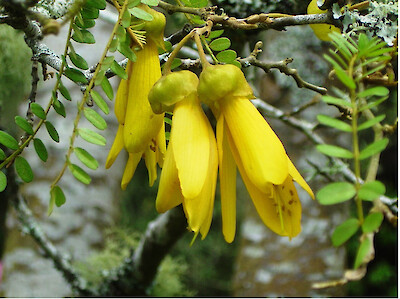

- Small tree (can grow to 10m)
- Flowers from August – October
- Flowers attract native birds (Tui)
- Semi – deciduous
- Tolerates a range of conditions, wind, cold, frosts
- Can be grown in sun or semi-shade
- Prefers wetter areas, shouldn’t be grown in dry soils
- Incorporate compost, sand and slow-release fertiliser when planting
Muehlenbeckia astonii – Shrubby Tororaro
(Mingimingi)
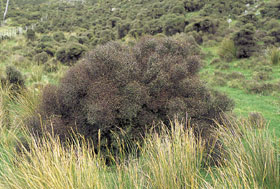
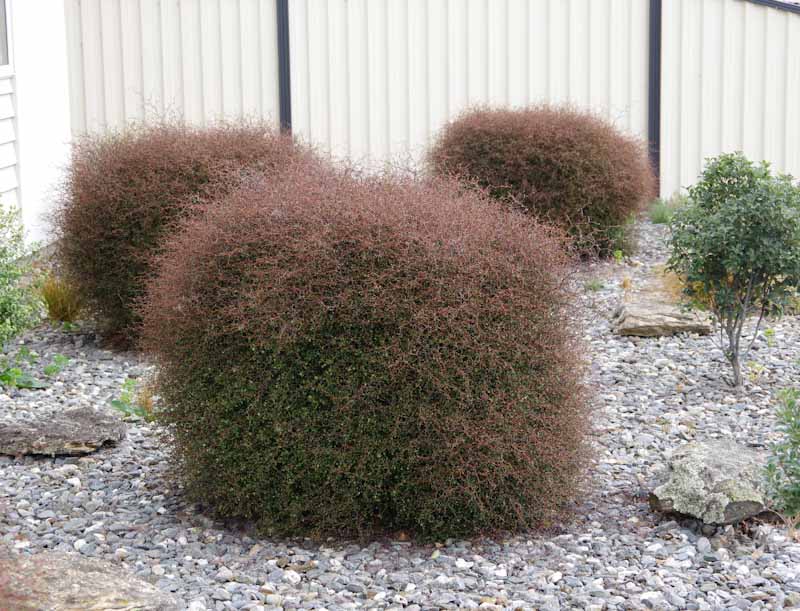
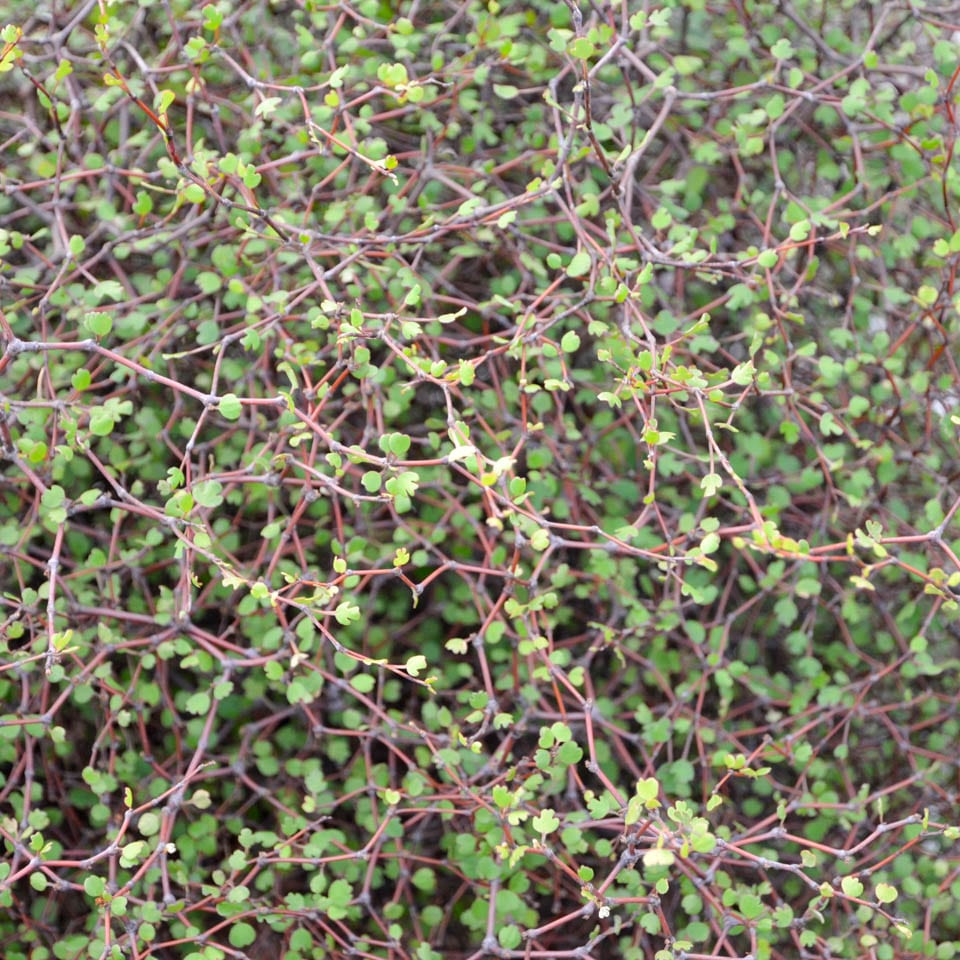
- Versatile shrub, great as an informal hedge or pruned into shapes in Summer
- Coastal or lowland species
- Tolerant of dry or windy conditions
- Can reach a height of 1-2m
- Tiny creamy yellow flowers appear in Summer
- Prefers full sun and well-drained soil
- Incorporate compost, sand and fertiliser when planting
- Attracts insects and is great habitat for lizards
- Semi-deciduous
Veronica stricta – Koromiko
(Hebe)

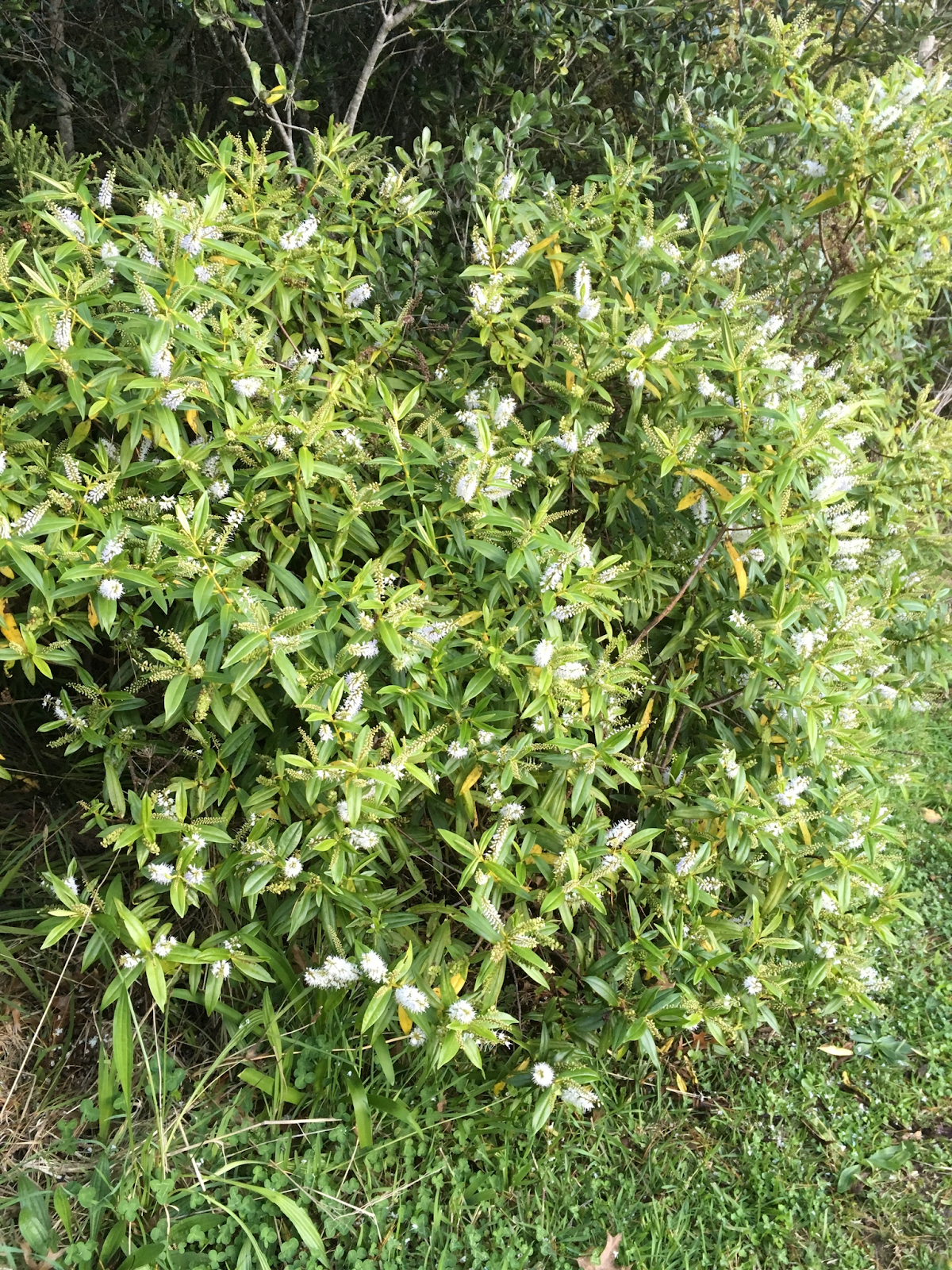
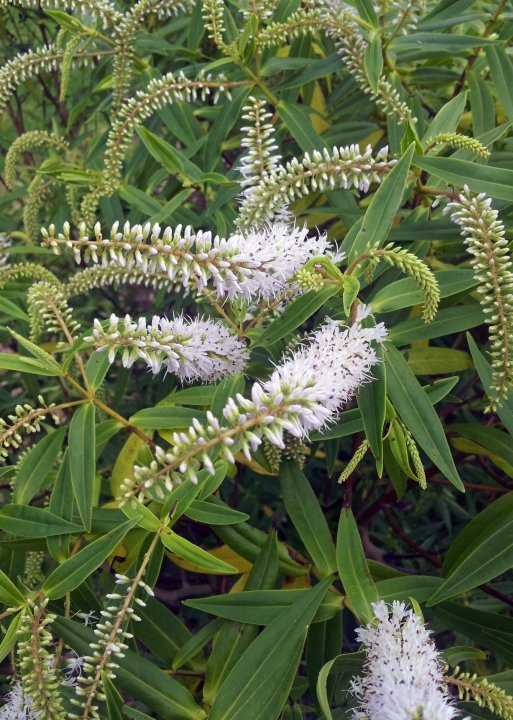
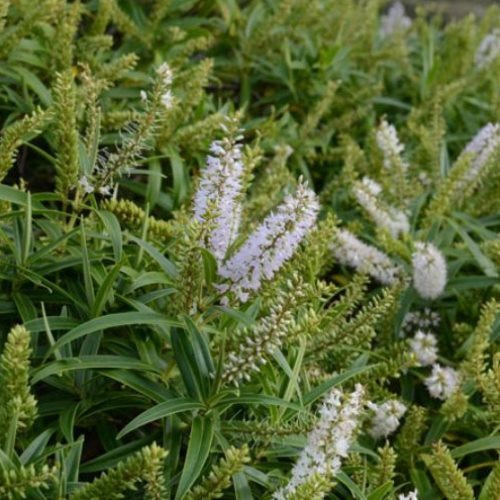
- Hardy, fast growing shrub
- Prefers open habitats, tolerates wet conditions and wind
- Full sun
- Grows to 1-2m
- Attracts insect pollinators
- Incorporate compost, sand and fertiliser when planting
- Attractive white flower spikes in Summer
Leptospermum scoparium – Manuka
(New Zealand Tea Tree)
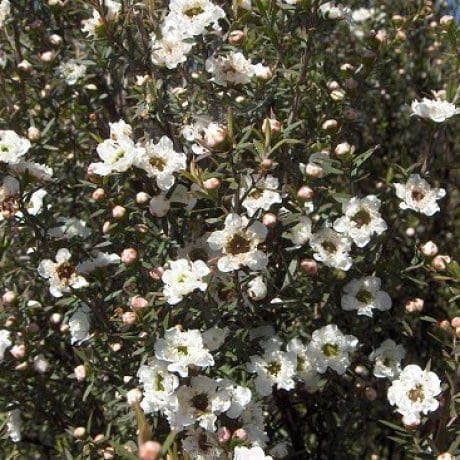

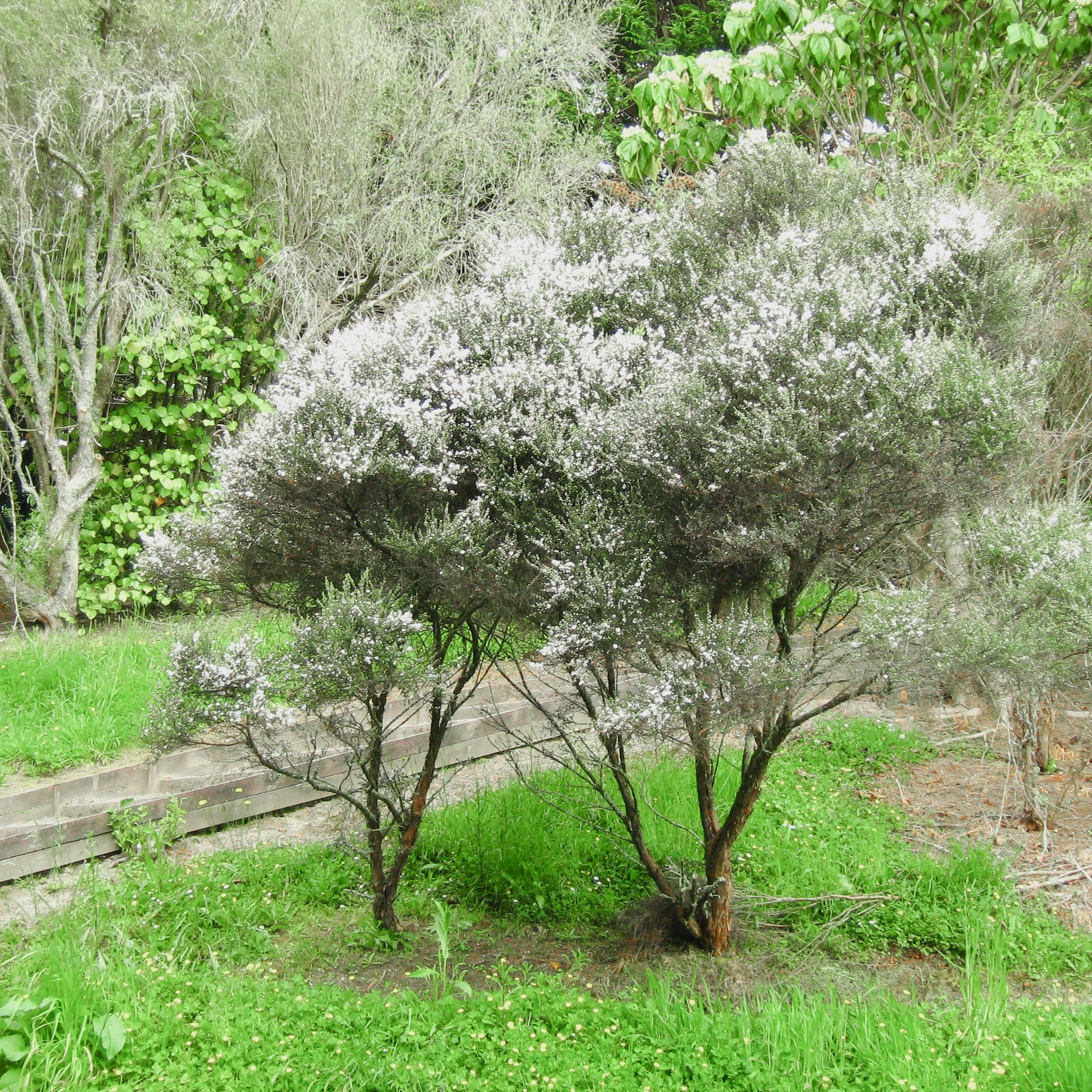
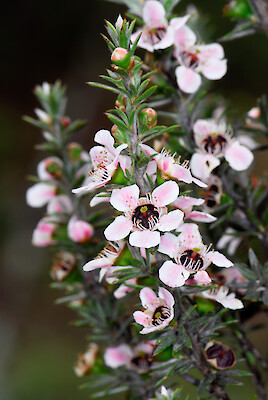
- Small prickly shrub or tree growing up to 5m
- Masses of small white/pink flowers through most of the year
- Attracts insect pollinators
- Quick growing
- Tolerates a wide range of conditions – dry – moist soil
- Full sun- partial shade
- Minimal pruning required
- Incorporate compost, sand and fertiliser when planting
- Excellent screening or shelter plant
- Evergreen
Phormium tenax – Harakeke
(New Zealand flax)
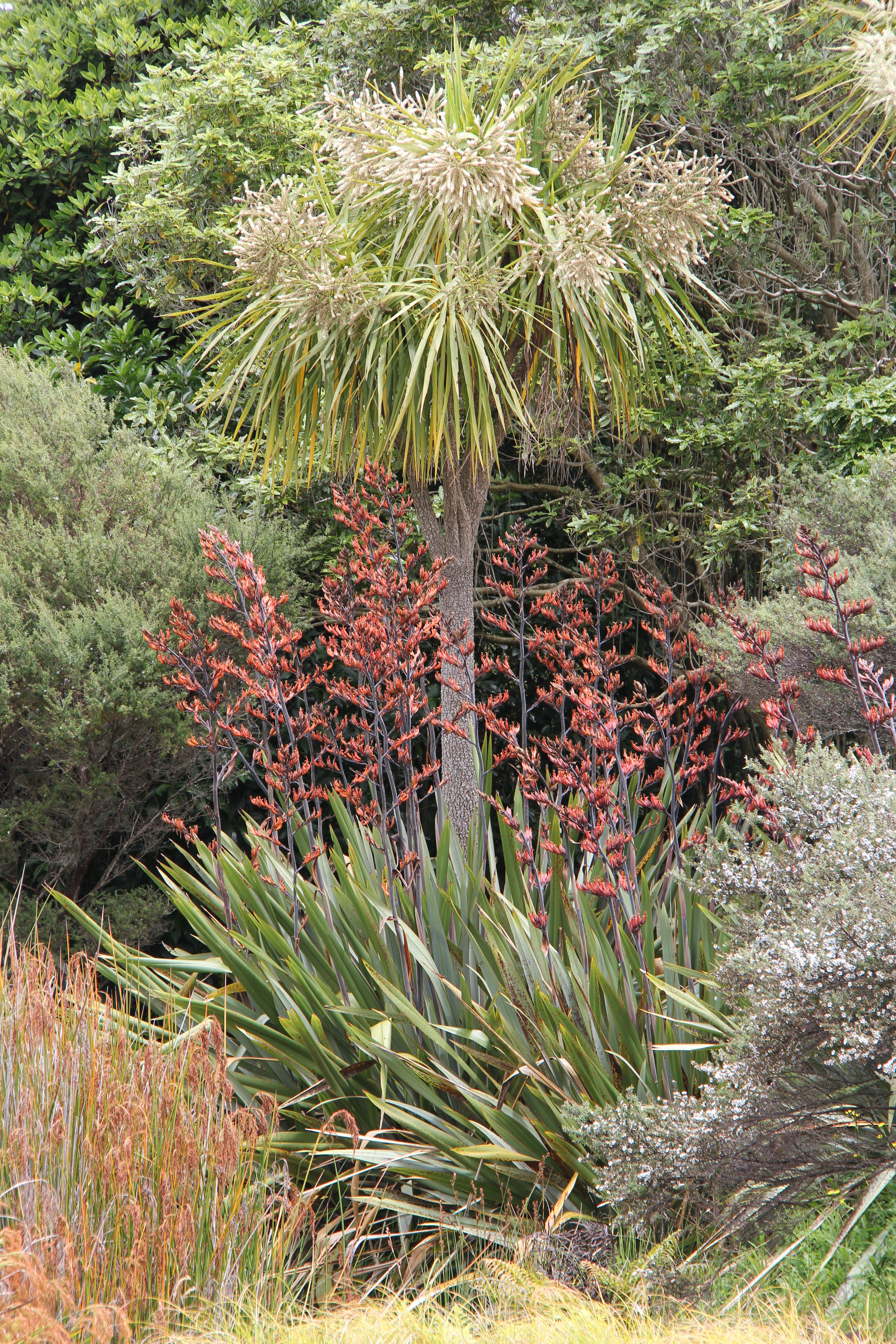

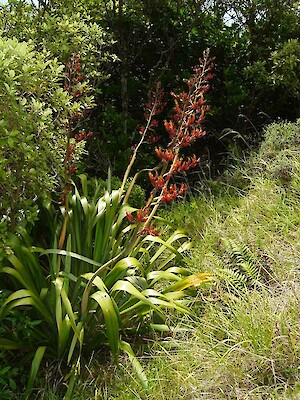

- A striking large flax forming robust clumps of broad vibrant green leaves
- Exceptional low shelter or erosion control plant
- Tall red flower spikes in Summer, provides nectar for insects and native birds
- Very hardy, naturally found in coastal and lowland swampy areas
- Grows to 3-5m
- Ideal for weaving
- Prefers wetter areas, tolerates frost
- Incorporate compost, sand and fertiliser when planting
Phormium cookianum – Mountain Flax
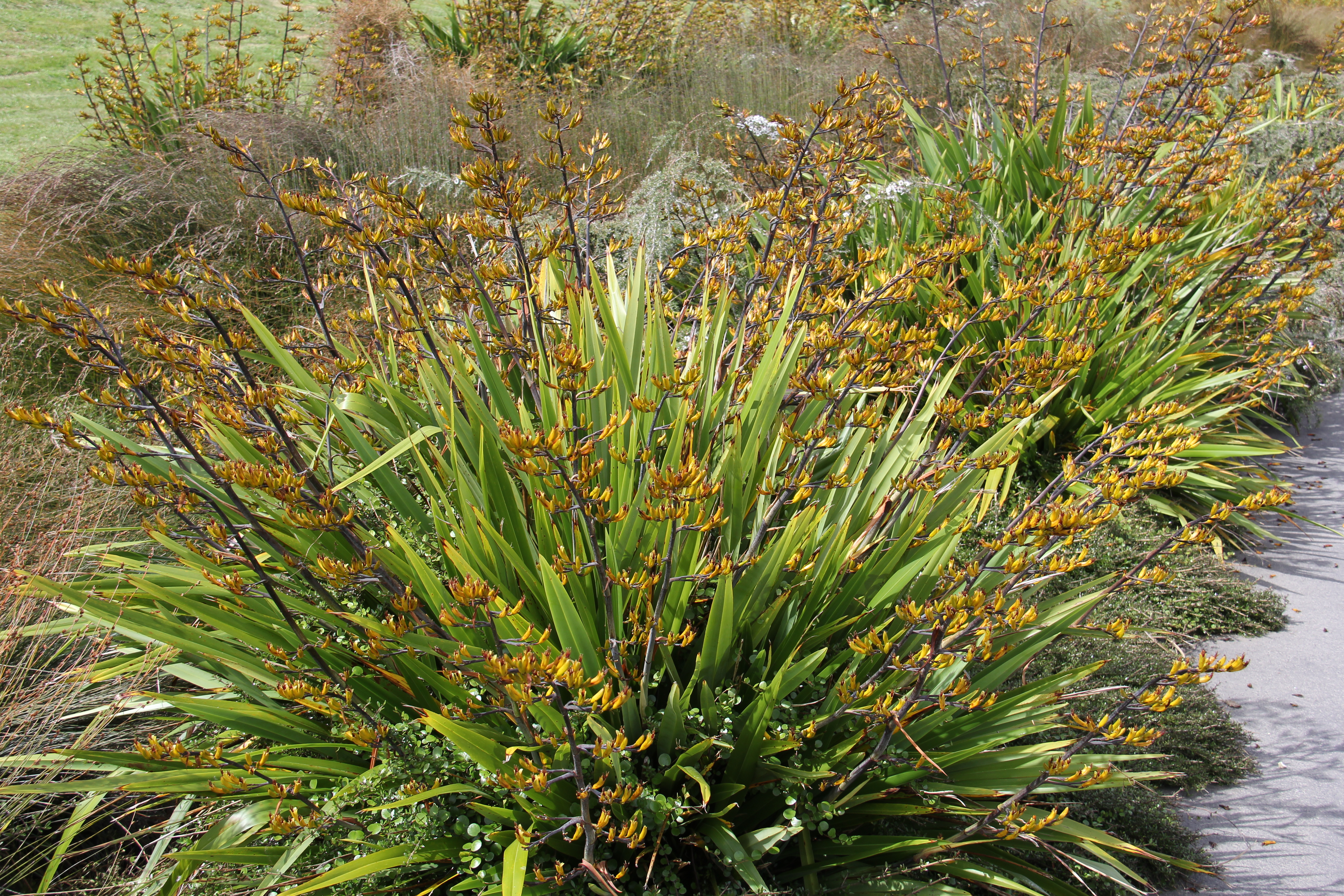
- Smaller flax variety – grows to 1.5m tall
- Yellow flower spikes produced in Summer attractive to insects and native birds
- Tolerant of wind, dry-wet conditions, prefers full sun
- Frost hardy
- Incorporate compost, sand and fertiliser when planting
- Naturally grows in coastal or subalpine areas along streams or on cliffs
- Great as a shelter plant or wind break
Pittosporum tenuifolium – Black Matipo
(Kohukohu)
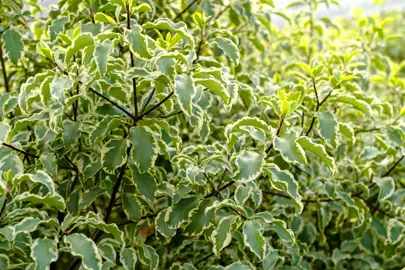

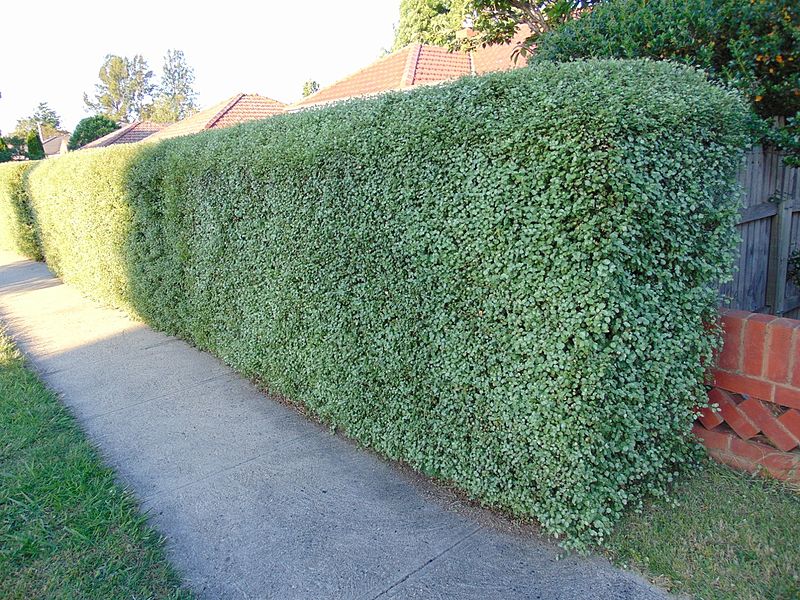

- Versatile large shrub or small tree
- Attractive foliage and small red flowers in Spring
- Great as a privacy hedge or low shelter plant
- Grows to 4-6m
- Attracts pollinator insects
- Tolerant of wind, partial shade, most soil types except extreme wet
- Grows best in full sun, well drained soil
- Incorporate compost, sand and fertiliser when planting
Coprosma robusta – Karamū
- Large bushy shrub or small tree
- Great as a hedge, shelter or nurse plant
- Can grow to 6m
- East to prune
- Prefers full sun or partial shade
- Produces masses of orange berries which attract native birds
- Hardy, can tolerate damp soils
- Incorporate compost, sand and fertiliser when planting

© Copyright 2024 - PEST FREE HOWICK WARD
A Howick Local Board funded project

